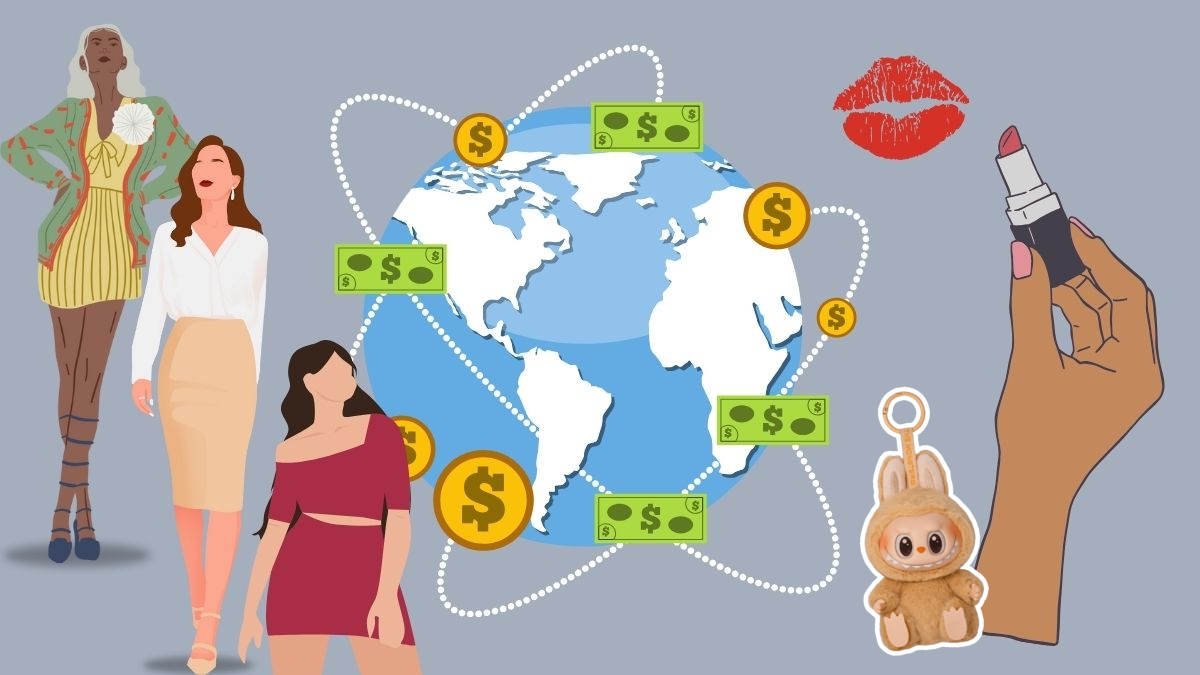Lifestyle
Lipsticks and Hemlines: An Economy Mood Check?

So, what do lipsticks and skirt lengths have to do with the economy? We know it sounds weird, but fashion and beauty trends have been used as unconventional indicators of consumer feelings regarding overall economic health.
These two small fashion choices produced the quirky terms Lipstick Effect and the Hemline Index, reflecting how our wallets and moods shift during economic ups and downs. Let’s break it down to see if it’s accurate and if you’ve ever felt the same way!
The Lipstick Effect: Small Luxury Comforts
Leonard Lauder, Estee Lauder’s son and former CEO of the famous cosmetics company, noticed that sales of small luxury items, like lipstick, tended to rise during economic downturns.
When bigger luxury experiences and items like vacations and designer handbags are put on pause, people still crave small material comforts to make them feel good. This is where lipstick enters the chat since it’s much more affordable and mood-boosting.
And it’s happened before. Sales of lipstick and nail polish increased during the 2008 financial crisis. During COVID-19, when people wore masks, sales of skincare and eyeshadow rose. If you took comfort in small moments of self-care, like getting some Labubus, you probably have felt the Lipstick Effect!
The Hemline Index: Do Higher Skirts Mean Happier Times?
Economist George Tayler first proposed the Hemline Index in the 1920s, suggesting that skirt lengths rise and fall with the stock market. In booming economies, hemlines get shorter (like the mini-skirts of the 1960s), while in recessions, longer skirts come into the picture (like the maxi skirts of the 1970s).
Why? Fashion becomes bolder and more playful when consumers feel confident and financially secure. However, people pull back on spending during a recession, and situations become more practical. Obviously, this isn’t very scientific. But our moods get reflected in what we wear, so spending and styles shift toward modesty when times get tough!
Cultural Trends Aren’t Just About Vanity
Of course, lipstick sales or skirt lengths won’t replace GDP reports or inflation data, but the cultural trends reveal how we FEEL about our finances, futures, and ourselves.
Think about how you feel when you spend more on fun, expressive products. It’s usually a sign of optimism, right? However, when spending shifts to practical items or small, affordable comforts, it may be a sign of uncertainty or stress. These are mood-based indicators that help paint a picture of the human side of economics since finance isn’t just numbers but includes emotion and behavior, too.
What These Trends Mean Now
It’s 2025, and we’re experiencing the economic volatility and uncertainty that tariffs (aka import taxes) are causing. But people are still buying their lipsticks, and hemlines are now more about personal choice and style instead of a trend.
Some may turn to bold lipstick and mini-skirts, while others decide to invest in skincare, save, and even side hustle to earn extra cash.
The Money Move
While lipsticks and hemlines aren’t precise financial indicators, they’re essentially a “mood check” for the economy in a cultural sense. They give a glimpse into what consumers are feeling, whether they’re anxious, optimistic, cautious, etc.
Next time you’re at your favorite store and notice a product push in the beauty or fashion aisle? It might be more than just a trend, but a low-key signal about how we feel the economy is going.
BRB, I’m going to go apply some lip tint now and maybe attempt to get a second Labubu. Or give up and get a Lafufu instead.

